Pinchas
You shall apportion the Land among these as an inheritance, in accordance with the number of names. To the large [tribe] you shall give a larger inheritance and to a smaller tribe you shall give a smaller inheritance, each person shall be given an inheritance according to his number. Only through a lot shall the Land be apportioned; they shall inherit it according to the names of their fathers’ tribes.
Bamidbar-Numbers 26:53-55
Einstein once said that he only went to his office at the Institute for Advanced Studies in Princeton to have an opportunity to chat on the way home with his friend, Viennese mathematician, Kurt Gödel. Once, the story goes, Gödel came to Einstein’s birthday party with a present – a new cosmological solution of Einstein’s gravitational field equations of General Relativity that contained closed time loops. That meant that in Einstein Universe, under certain, luckily very rare conditions, one could travel back in time… sort of. Einstein didn’t appreciate the gift that not only ruined his birthday and many days after that as the aging genius pondered the logical impossibility of traveling back in time that his theory seemed to allow. (This leads to the Grandfather Paradox – if someone travels back in time and kills his own grandfather…)In Parshat (the weekly Torah portion of) Pinchas we travel back in time… sort of.

Rashi
“… They shall inherit it according to the names of their fathers’ tribes,” says verse 55 of this Torah portion. Astonishingly, the Torah commentator par excellence, Rashi – Rabbi Shlomo Yitzhaki (1040-1105) – comments on this as follows:
This refers to those who came out of Egypt. Scripture treats this inheritance differently from all other inheritances [mentioned] in the Torah. For in the case of all other inheritances, the living inherit the dead, whereas here, the dead inherit the living. How is this? Two brothers who came out of Egypt who had sons that entered the Land – one had one [son] and the other had three. The one received one portion, and the three received three, as it says, “You shall apportion the Land among these” (verse 53). The inheritance [of these four] reverts to their grandfather [who left Egypt] and they divided everything equally. This is the meaning of what is stated, “they shall inherit it according to the names of their fathers’ tribes.” For after the sons received it, it was divided up according to the fathers who had left Egypt, whereas had they apportioned it originally according to the number who came out of Egypt, these four would not have received four but only two portions. Now, however, they received four portions. — [Based on Tr. Bava Batra 117a]
Let’s just think about it for a moment… Usually, “the living inherit the dead,” says Rashi, “whereas here, the dead inherit the living.” This is a curious example of retrocausality in the Torah.
The word “retrocausality” is used differently in different contexts. It may mean future events affecting the present, or the present affecting the past. Or it can be loosely used to denote travel back in time, which is not necessarily retrocausality in the strict sense of the word. Retrocausality – when a later event influences an earlier event, particularly when the latter are the causes for the former – is a problem discussed in physics and philosophy.
Physics does not forbid retrocausality. While causality per se is not a subject of inquiry in physics and has no place in physics equations, the related notion of the direction of time is a subject of hot debate.
On the one hand, Newton’s laws of mechanics are time-symmetric and allow time to go forward or backward just as well. Furthermore, in Einstein’s Special Relativity, time and space are unified into a four-dimensional spacetime continuum where past, present, and future all exist “at the same time” – the so called “block universe” is agnostic to the direction of time.
Thermodynamics, on the other hand, is not symmetric in time, as entropy increases with time and
thermodynamical processes are irreversible. While Schrödinger’s equation of quantum mechanics is, itself, symmetric in time, the collapse of the wavefunction is not – it is irreversible.
Traveling back in time has been profitably exploited by Richard Feynman who famously said that the positron is an electron traveling back in time. Feynman and his teacher, John Archibald Wheeler, developed a theory called Wheeler–Feynman absorber theory (a.k.a. the Wheeler–Feynman time-symmetric theory) where all antiparticles are viewed as particles (or waves) traveling back in time.
Retrocausality may be classified into two temporal categories:
- The future affecting the present and
- The present affecting the past
(We need to remember, of course, that past, present, and future are relative concepts that are only meaningful in the same frame of reference. As the Special Theory of Relativity proved, there is no absolute time and no universal present separating past from future for all observers.)
Let’s give some examples.
- The future affecting the present.
A premonition falls into the first category, namely when future events affect our present state of knowledge. Cornell psychologist Dr. Daryl Bem published the controversial 2011 paper “Feeling the ‘Future’,” describing nine experiments showing backward time effects in brain functions. Other authors (Libet, 1979; Stapp, 1996; Radin, 2004; Bierman, 2008) have described similar phenomena of sensing the future by human consciousness. Another example from physics was
proposed by Yakir Aharonov (1998) in his back-from-the-future version of quantum theory, in which random events in quantum mechanics are caused by events in the future. The origins of this theory, called Two-state Vector Formalism (TSVF), goes back to time-symmetric interpretations of quantum mechanics first proposed by Arthur Eddington(1928) and later developed by Erwin Schrödinger(1932).
The TSVF itself was first formulated by Satosi Watanabe (1955) and later rediscovered by Yakir Aharonov, Peter Bergmann and Joel Lebowitz in 1964. In TSVF, past and future measurements, taken together, provide complete information about a quantum system. TSVF combines causality both from the past (forward causation) and the future (backwards causation, a.k.a. retrocausation).
In TSVF, in addition to a history state vector (in Dirac bra-ket notation this is a “bra” vector – áhistory|) evolving from the past into the future, there is a future state vector (in bra-ket notation this is a “ket” vector – |futureñ) propagating back-from-the-future. The inner product of these two vectors áhistory|futureñ represents the probability amplitude of the future state |futureñ collapsing into the past state áhistory|, which collapse, of course, happens in the present moment. This is precisely what it says in Kabbalah – the past impregnates the future and gives birth to the present moment! This |futureñ state vector causes the final selection conditions that affect the present state – retrocausation.
Aharonov and his colleagues claim that “quantum mechanics lets one impose… a putative final state of the universe.” Judaism calls this final state of the universe Olam Haba – the World-to-Come.
- The present affecting the past
An example of the second category is teshuvah – repentance. The result of sincere repentance is not only that the sinner is forgiven henceforth, but that the sin itself is wiped out retroactively, as it is stated:
“I have wiped out your transgressions like a thick cloud and your sins like a heavy mist.
(Isaiah 44:22)
And it is said with respect to Yom Kippur – the Day of Atonement –
“For on this day, atonement shall be made for you to cleanse you of all your sins…”
(Leviticus 16:30)
While these psukim (verses), on the first blush, do not suggest any retrocausality per se, let us remember that the past sins are wiped out in the present moment in response to the teshuvah. Atonement today – Yom Kippur – cleans the penitent from the sins of the past, which are erased or even converted to merits (if the repentance was done out of love – teshuvah b’ahavah). Thus, Teshuvah done in the present affects sins committed in the past. The penitent is able to reach into his past and change sins into merits (or, at least, wipe them out)
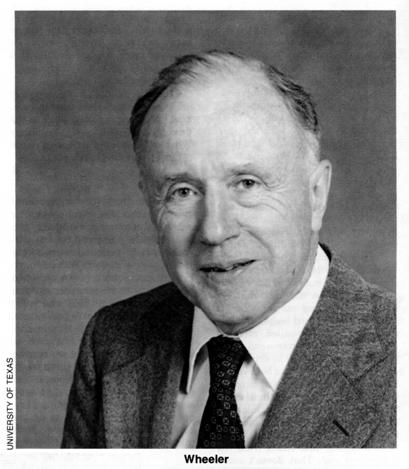
John Archibald Wheeler
An example from physics is a delayed choice experiment proposed by John Archibald Wheeler in 1978. This involves a modified double-slit experiment. The classic double-slit experiment shows that photons (or any quantum particles) behave like particles or like waves depending on what we wish to detect – particles or waves. In quantum mechanics we see what we choose to see. If we send a bunch of photons through a double slit and focus on a screen behind, we will see alternating light and dark bands – an interference pattern characteristic of two waves interfering with each other. If, on the other hand, we focus on the two slits detecting which slit each photon went through, we will not see any interference pattern – photons will behave like particles.
In 1986, Carroll Alley from the University of Maryland, proved this idea using an interferometer which let a photon take either one path or two after passing through a beam splitter. He demonstrated that the photon’s path depended on a choice made after the photon had to “decide” which way to go. Some argue that this doesn’t prove retrocausality as the path of a photon is indeterminate before the experiment that causes the collapse of the photon’s wavefunction.
In the Transactional Interpretation of Quantum Mechanics (TIQM) proposed by John Cramer, particles interact with each other by sending waves that go forward and backward in time. In the new experiment proposed by Cramer, we would use two double-slit setups and entangled pairs of photons. As was previously shown by Anton Zeilinger and Birgit Dopfer in Austria in the late 90s, if we focus on wave properties of one of the entangled photons, the other photon would act as a wave as well. And, conversely, if we measured corpuscular properties of one photon in a pair, the other entangled photon would act as a particle too. Cramer proposed to send pairs of entangled photons through two double-slit screens but in one of them the second screen, on which the interference pattern could be observed, would be removed by several kilometers and connected by fiber optics. In this setup, a choice to see the photon as a particle or a wave can be delayed by a few microseconds. However, due to the instantaneous “communication” between entangled particles the other photon would get a signal to act as a wave or a particle immediately after passing through a double-slit, i.e., a few microseconds before the choice was made. Observing the second photon in this entangled pair can give us information about the future choice made by the experimenter with respect to the first photon.
This gedanken experiment is not only an illustration of retrocausality but it is a great illustration of the paradox of free choice and the omniscience of G‑d. If the omniscient G‑d knows everything and for Him there is no difference between past, present, and future, then he knows about our future choices before we make them. However, if His knowledge is also absolute (i.e., can never be wrong), how can we make a choice that is different from the one heretofore known by G‑d? Hence it would appear that there is no free choice. The explanation of this paradox in Chasidut is that the knowledge of G‑d (da’at elyon) does not affect our knowledge (da’at tachton). Cramer’s gedanken experiment illustrates that even a mortal physicist conducting a double-slit experiment can know of his (or his colleague’s) choice before it was made without destroying the free choice.
The above-mentioned comment of Rashi provided yet another example of the second category of retrocausality – when the dead inherit from the living in parshat Pinchas. The number of members of any given family retroactively affect the portion that the dead forefathers were entitled to. The present affecting the past.
It seems to me that, perhaps, it is not by chance that this unique (as Rashi stresses) example of retrocausality in Torah comes in the context of dividing the land of Israel between Jews standing on the threshold of entering the Promised Land, which completes the process of geulat Mitzrayim – the exodus from Egypt. This “history state vector” propagating from the present to the past complements the “future state vector” retrograding from the future – Olam Haba (the World-to-Come) – to the present guiding the world to the ultimate geulah, as the midrash states, G‑d created the world for the sake of Mashiach – the Messiah (Bereishit Rabba 1; 4).

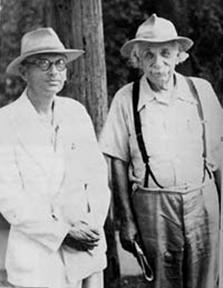
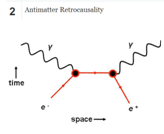
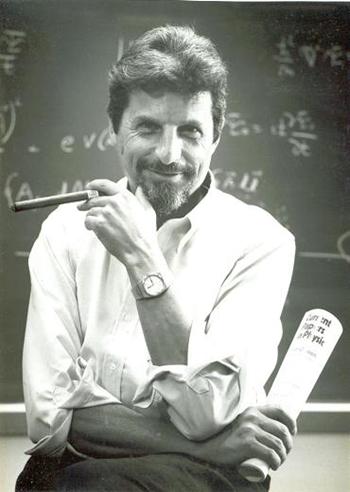
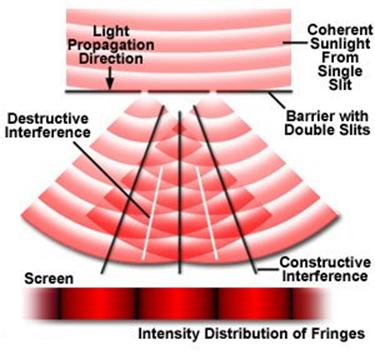
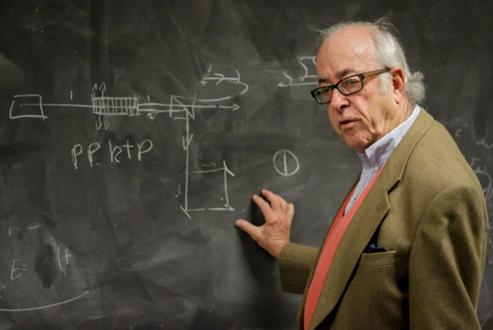
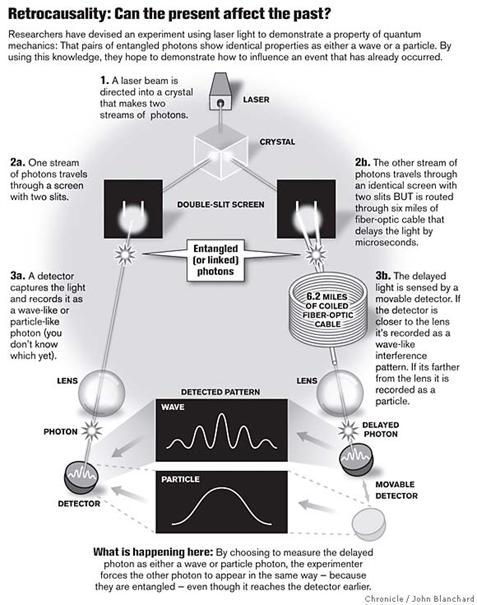
This is fairly well done. I will make detailed comments another time.
I am allegedly descended from Rashi.
The uncanny story here is told in my book Destiny Matrix (Authorhouse, Amazon).
I was also influenced by Cabalist Carlo Suares in Paris in the early 1970s that led to the book “Space-Time and Beyond.”
My post-quantum physics is about retrocausality so it appears that Rashi, my dead ancestor?, got his ideas on this from me his living descendent. Some relevant videos of me on this topic are on youtube and vimeo. I am also a leading character in David Kaiser’s book “How the Hippies Saved Physics” and my early ideas on this topic are in Robert Anton Wilson’s “Cosmic Trigger”, Picknett and Princes’ “Stargate Conspiracy” and other similar books.
reading a book called the intention experiment led me here